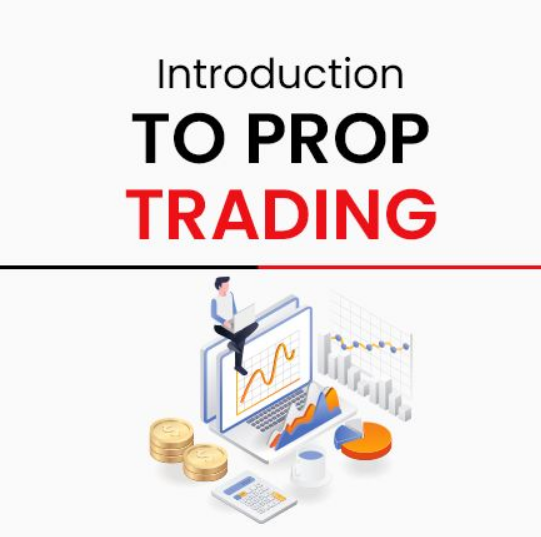Proven Prop Trading Broker: Advanced Strategies
In today’s competitive prop trading environment, evolving your strategy and employing advanced tools is critical for sustained success. This blog lays out in-depth insights aimed at prop trading professionals wanting to push the boundaries of backtesting automation, risk management, and real-time strategy optimization. Whether you’re a junior trader looking to scale strategies or a seasoned quant refining your models, this article provides actionable guidance to outperform the market.

Understanding the Prop Trading Landscape
Proprietary trading firms have long relied on sophisticated trading systems and rigorous backtesting to forecast market behavior. Leading prop trading brokers now offer comprehensive platforms that integrate tools like TradingView, MetaTrader 5, NinjaTrader, Amibroker, and QuantConnect. These platforms offer robust automated backtesting features, detailed scenario analysis, and integration capabilities with real-time data feeds—attributes that are essential for maintaining a competitive edge.
Market Demands and Regulatory Considerations
In an era defined by strict regulatory protocols such as MiFID II, ESMA standards, and NFA rules, compliance must accompany innovation. Advanced platforms not only enhance performance through automated optimization but also provide compliance tools like detailed risk reporting and audit trails, ensuring that both individual traders and prop firms stay within regulatory bounds.

Figure 1: An illustrative screenshot from TradingView showcasing a detailed backtesting report with key performance metrics, crucial for prop trading analysis.
Advanced Backtesting: Techniques and Best Practices
Successful prop trading strategies result from meticulously designed backtesting processes. Beyond simply running historical data, effective backtesting involves recognizing and mitigating pitfalls. Overfitting, survivorship bias, and look-ahead bias are common issues that can skew results. Implementing strategies like walk-forward optimization and reserving part of your dataset for out-of-sample testing are critical to validating your models.
Comparing Traditional and Walk-Forward Backtesting
Traditional backtesting serves as the starting point, but it often fails to simulate future market conditions. In contrast, walk-forward optimization adjusts parameters at regular intervals, ensuring that the strategy remains resilient to new market behaviors. This method is particularly beneficial in a prop trading setting where market volatility requires rapid adaptation.
In-Depth Tool Comparison for Automated Backtesting
Diversified tool selection is key. Here we compare several leading automated backtesting platforms:
| Tool | Backtesting Features | Data Quality & Coverage | Integration Capabilities | Pricing | Ideal For |
|---|---|---|---|---|---|
| TradingView | Vectorized testing, auto parameter tuning | Extensive historical data across asset classes | Robust API and broker integration | Free basic tier; premium subscriptions available | Retail traders and prop firms seeking quick insights |
| MetaTrader 5 | Event-driven testing with commission/slippage handling | Reliable tick-level data with deep history | Seamless broker links and API access | Free demo accounts; competitive live trading fees | Forex traders and high-frequency strategy users |
| NinjaTrader | Advanced charting, real-time strategy simulation | High-fidelity data feeds | Plugin support for various brokers | Free simulation; licensing required for live deployment | Active traders requiring deep customization |
| Amibroker | Scenario analysis, stress testing, and optimization | Rich historical data from multiple sources | Supports external APIs for extended integration | One-time license fee | Quantitative analysts and prop firms needing advanced metrics |
| QuantConnect | Cloud-based, automated backtesting with parameter optimization | Global datasets including equities, forex, and crypto | Extensive API support and collaborative features | Free tier available; subscription plans for advanced use | Institutional traders and collaborative teams |
For further insight, explore our detailed analysis in the article Advanced Backtesting Techniques for Prop Firms.
Real-World Case Study: Enhancing Prop Trading Performance
A mid-sized prop trading firm recently integrated advanced backtesting with forward testing. Initially focusing on strategies such as mean reversion and momentum, the firm experienced a significant turnaround after deploying automated parameter optimization. Key outcomes included:
- An improvement in the Sharpe ratio from 1.2 to 1.8
- A reduction in maximum drawdown from 25% to 18%
- 30% faster iteration times enabled by tools like QuantConnect and Amibroker
Step-by-Step Guide for Implementation
- Data Gathering: Collect high-quality tick data and bar data from multiple reliable sources.
- Initial Testing: Run traditional backtests using MetaTrader 5 or NinjaTrader to establish baseline metrics.
- Out-of-Sample Validation: Reserve a segment of data for out-of-sample testing to avoid overfitting.
- Walk-Forward Optimization: Use cloud-based tools like QuantConnect to continuously refine parameters.
- Paper Trading: Transition to paper trading to confirm live-market performance before full deployment.
Illustrative Code Snippet: Backtesting with Backtrader
import backtrader as bt
class SMA_Strategy(bt.Strategy):
params = (('period', 20), )
def __init__(self):
self.sma = bt.indicators.SimpleMovingAverage(self.data.close, period=self.params.period)
def next(self):
if self.data.close[0] > self.sma[0]:
self.buy()
elif self.data.close[0] < self.sma[0]:
self.sell()
cerebro = bt.Cerebro()
# Add data feed (e.g., Yahoo Finance for AAPL historical data)
data = bt.feeds.YahooFinanceData(dataname='AAPL', fromdate=bt.datetime.datetime(2019, 1, 1), todate=bt.datetime.datetime(2020, 1, 1))
cerebro.adddata(data)
cerebro.addstrategy(SMA_Strategy)
results = cerebro.run()
cerebro.plot()

Figure 2: A visual comparison chart of top automated backtesting tools, highlighting performance metrics essential for prop trading success.
Integrating Risk Management and Regulatory Compliance
Risk management is pivotal to sustainable prop trading. A structured approach includes real-time risk dashboards, automated alert systems, and stress testing protocols. A practical risk management checklist might include:
- Daily exposure limits and stop-loss adjustments
- Regular stress tests against historical market shocks
- Automated alerts for deviations from risk thresholds
- Compliance reporting aligned with MiFID II and NFA regulations
Enhancing Your Risk Management Framework
Integrate your backtesting results with forward testing by monitoring critical metrics including profit factor, maximum drawdown, and risk-adjusted returns. This dual approach not only optimizes strategies but also ensures adherence to compliance standards.
Final Thoughts and Actionable Next Steps
Deploying advanced backtesting and risk management strategies is essential for any prop trading professional aiming for long-term success. As seen, leveraging platforms like TradingView, MetaTrader 5, NinjaTrader, Amibroker, and QuantConnect can significantly enhance your trading system's performance while ensuring compliance with stringent regulatory requirements.
To further empower your trading journey, download our comprehensive Risk Management Checklist below. This checklist outlines every critical control point, from exposure limits to stress testing protocols, ensuring you are well-prepared for live market conditions. Additionally, consider signing up for our webinar on "Next-Gen Automated Backtesting for Prop Firms" to gain further insights into walk-forward optimization and out-of-sample testing methodologies.
For continued learning, explore additional resources on our site, including articles on Risk Management in Prop Trading and Advanced Backtesting Techniques.
By following these advanced strategies, you can enhance your prop trading system to achieve a superior risk-reward balance and maintain a competitive edge in the ever-evolving trading landscape. Take the next step by implementing these insights today and transform your trading performance for tomorrow.
As of October 2023, these strategies reflect the current best practices and regulatory requirements in prop trading.







